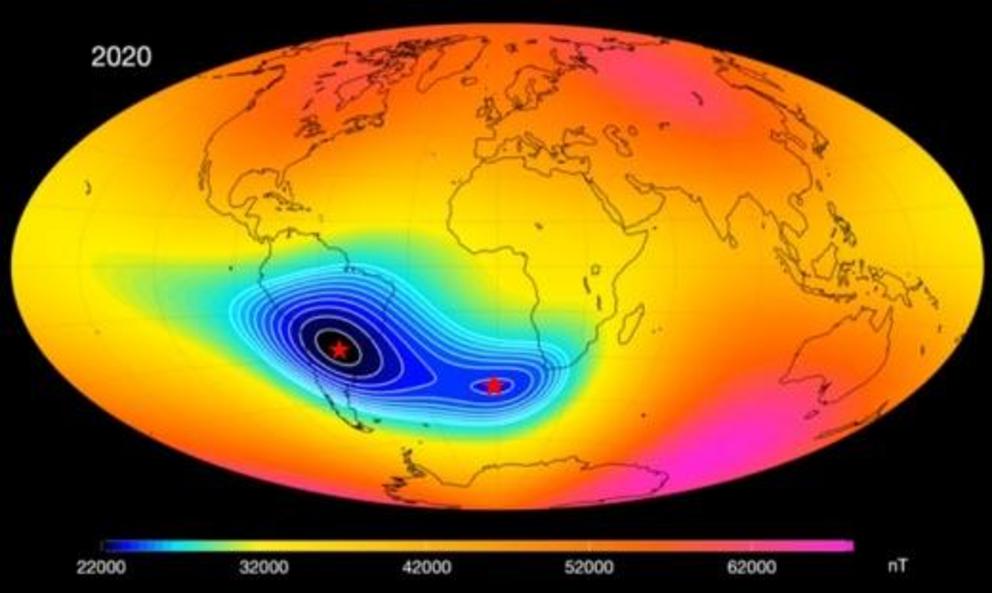Is the South Atlantic anomaly splitting in two?
New data from Europe's Swarm satellites show something strange is afoot in Earth's magnetic field. The South Atlantic Anomaly might be splitting in two. "A new, eastern minimum of the South Atlantic Anomaly has appeared over the last decade," says Jürgen Matzka, from the German Research Center for Geosciences. "In recent years it has been developing vigorously."
Video animation available at source link below.
The South Atlantic Anomaly is a weak spot in Earth's magnetic field centered roughly on the Atlantic side of South America. Discovered in 1958, it has been growing and shifting for decades. The latest data from Swarm show a new weak spot forming just off the southern tip of Africa.
"We are very lucky to have the Swarm satellites in orbit to investigate this development," says Matzka.
Launched in November 2013, Swarm is a constellation of 3 identical satellites flying in formation around Earth. They are equipped with magnetometers, star trackers and other instruments, which allow the satellites to make exquisitely detailed 3D measurements of Earth's magnetic field. The possible splitting of the Anomaly is just one of the mission's many significant findings.
Researchers have long known that Earth's magnetic field is weakening. Over the last 200 years, the globally averaged magnetic field has lost around 9% of its strength, with the South Atlantic Anomaly leading the way. From 1970 to 2020, the minimum field strength in this area dropped from 24,000 nanoteslas to 22,000.
As the South Atlantic Anomaly has weakened, the inner Van Allen Belt has spilled into it, allowing energetic particles (especially protons) to get within 200 km of Earth's surface. This poses little threat to people on the ground, but spacecraft aren't so lucky. When satellites fly through the Anomaly, they are exposed to relatively strong radiation. Onboard computers may reboot and digital cameras can be fogged by streaks of charged particles flying through them. The ISS has extra shielding to deal with this problem, and the Hubble Space Telescope doesn't even bother to make observations when it is inside the Anomaly.
If the South Atlantic Anomaly eventually splits into two cells, satellite mission planners will have to contend with a new zone of high radiation. The splitting is more than just a nuisance, however. It could offer clues to the origin of the Anomaly itself. Earth's magnetic field is created by currents of superheated liquid iron swirling ~3000 km beneath our feet. Changes "up here" can tell researchers what's going on "down there."
Stay tuned for updates as the Swarm mission continues.

